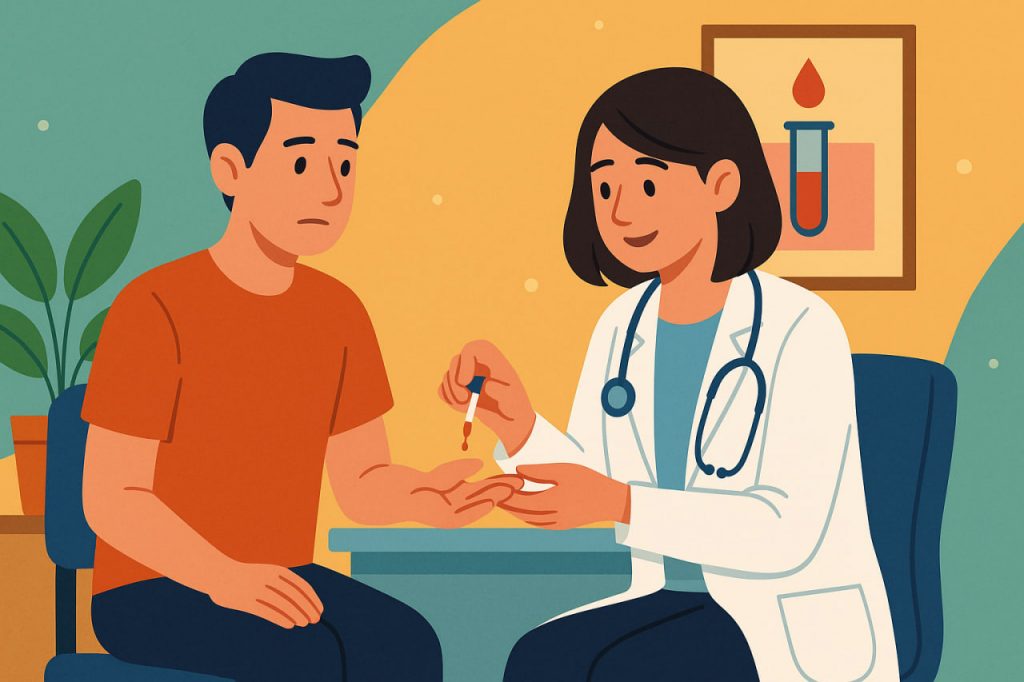Prediabetes is a condition where blood sugar levels are higher than normal but not yet high enough to be classified as type 2 diabetes. It develops gradually and often shows few or no symptoms, which makes early detection critical for preventing progression to diabetes.
1. What is Prediabetes?
Prediabetes occurs when the body becomes less effective at using insulin or producing enough of it, leading to elevated glucose levels. This condition often develops silently over several years and can be reversed with lifestyle changes if caught in time.
2. Common Risk Factors
You may be at higher risk if you:
- Are overweight, especially with excess belly fat
- Lead a sedentary lifestyle
- Have a family history of diabetes
- Are over 45 years old
- Have high blood pressure or abnormal cholesterol levels
3. Early Signs and Symptoms
Prediabetes rarely causes noticeable symptoms, but some possible warning signs include:
- Increased thirst and frequent urination
- Fatigue or lack of energy
- Blurred vision
- Slow healing of cuts or wounds
- Darkened skin patches, especially around the neck or armpits (acanthosis nigricans)
4. How to Diagnose Prediabetes
Doctors use several tests to detect prediabetes:
- Fasting blood glucose test
- Oral glucose tolerance test (OGTT)
- HbA1c test to measure average blood sugar over 3 months
5. Prevention and Next Steps
If diagnosed with prediabetes, you can reduce your risk of developing type 2 diabetes by:
- Eating a balanced diet rich in vegetables, lean protein, and whole grains
- Exercising at least 150 minutes per week
- Maintaining a healthy weight
- Limiting sugar and refined carbohydrates
- Monitoring blood sugar regularly
Conclusion
Prediabetes is a silent warning sign that should not be ignored. Early detection through medical screening, along with lifestyle changes, can significantly lower the risk of developing type 2 diabetes and improve overall health.
Glossary
- Insulin – A hormone that helps the body use glucose for energy.
- Glucose – A type of sugar that is the body’s main energy source.
- HbA1c test – A blood test showing average blood sugar over the past 3 months.
- Acanthosis nigricans – Skin darkening that may signal insulin resistance.
- Oral glucose tolerance test (OGTT) – A test measuring blood sugar before and after drinking a sugary solution.


